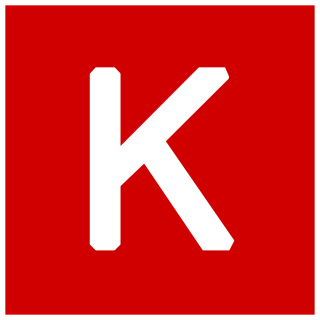Top Qs
Timeline
Chat
Perspective
Keras
Neural network library From Wikipedia, the free encyclopedia
Remove ads
Keras is an open-source library that provides a Python interface for artificial neural networks. Keras was first independent software, then integrated into the TensorFlow library, and later added support for more. "Keras 3 is a full rewrite of Keras [and can be used] as a low-level cross-framework language to develop custom components such as layers, models, or metrics that can be used in native workflows in JAX, TensorFlow, or PyTorch — with one codebase."[2] Keras 3 will be the default Keras version for TensorFlow 2.16 onwards, but Keras 2 can still be used.[3]
Remove ads
History
The name 'Keras' derives from the Ancient Greek word κέρας (Keras) meaning 'horn'.[4]
Designed to enable fast experimentation with deep neural networks, Keras focuses on being user-friendly, modular, and extensible. It was developed as part of the research effort of project ONEIROS (Open-ended Neuro-Electronic Intelligent Robot Operating System),[5] and its primary author and maintainer is François Chollet, who was a Google engineer until leaving the company in 2024.[6] Chollet is also the author of the Xception deep neural network model.[7]
Up until version 2.3, Keras supported multiple backends, including TensorFlow, Microsoft Cognitive Toolkit, Theano, and PlaidML.[8][9][10]
From version 2.4 up until version 3.0, only TensorFlow was supported. Starting with version 3.0 (as well as its preview version, Keras Core), however, Keras has become multi-backend again, supporting TensorFlow, JAX, and PyTorch.[11] It now also supports OpenVINO.
Remove ads
Features
Keras contains numerous implementations of commonly used neural-network building blocks such as layers, objectives, activation functions, optimizers, and a host of tools for working with image and text data to simplify programming for deep neural networks.[12] The code is hosted on GitHub, and community support forums include the GitHub issues page.[13]
In addition to standard neural networks, Keras has support for convolutional and recurrent neural networks. It supports other common utility layers like dropout, batch normalization, and pooling.[14]
Keras allows users to produce deep models on smartphones (iOS and Android), on the web, or on the Java Virtual Machine.[9] It also allows use of distributed training of deep-learning models on clusters of graphics processing units (GPU) and tensor processing units (TPU).[15]
Remove ads
See also
References
External links
Wikiwand - on
Seamless Wikipedia browsing. On steroids.
Remove ads

